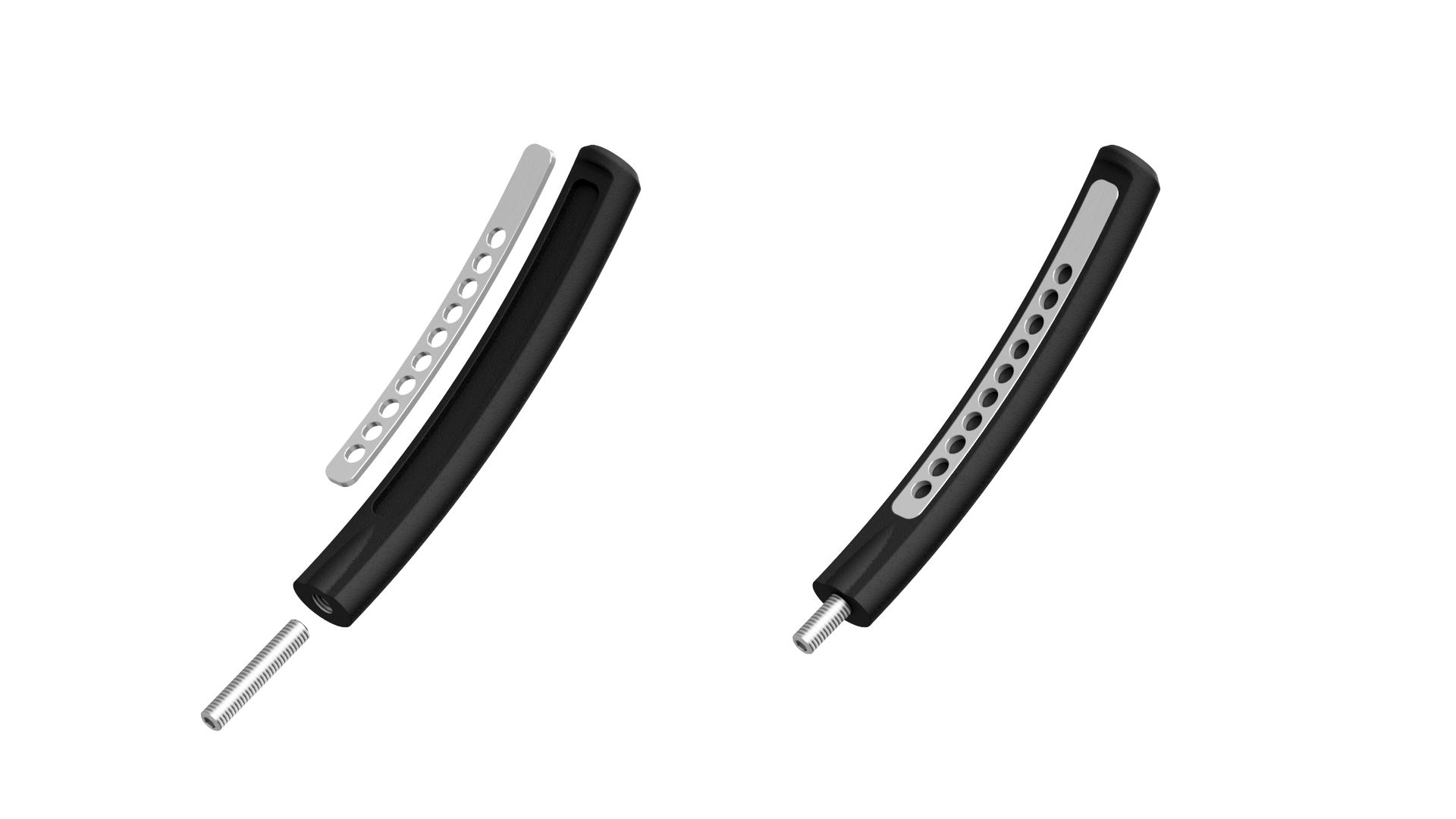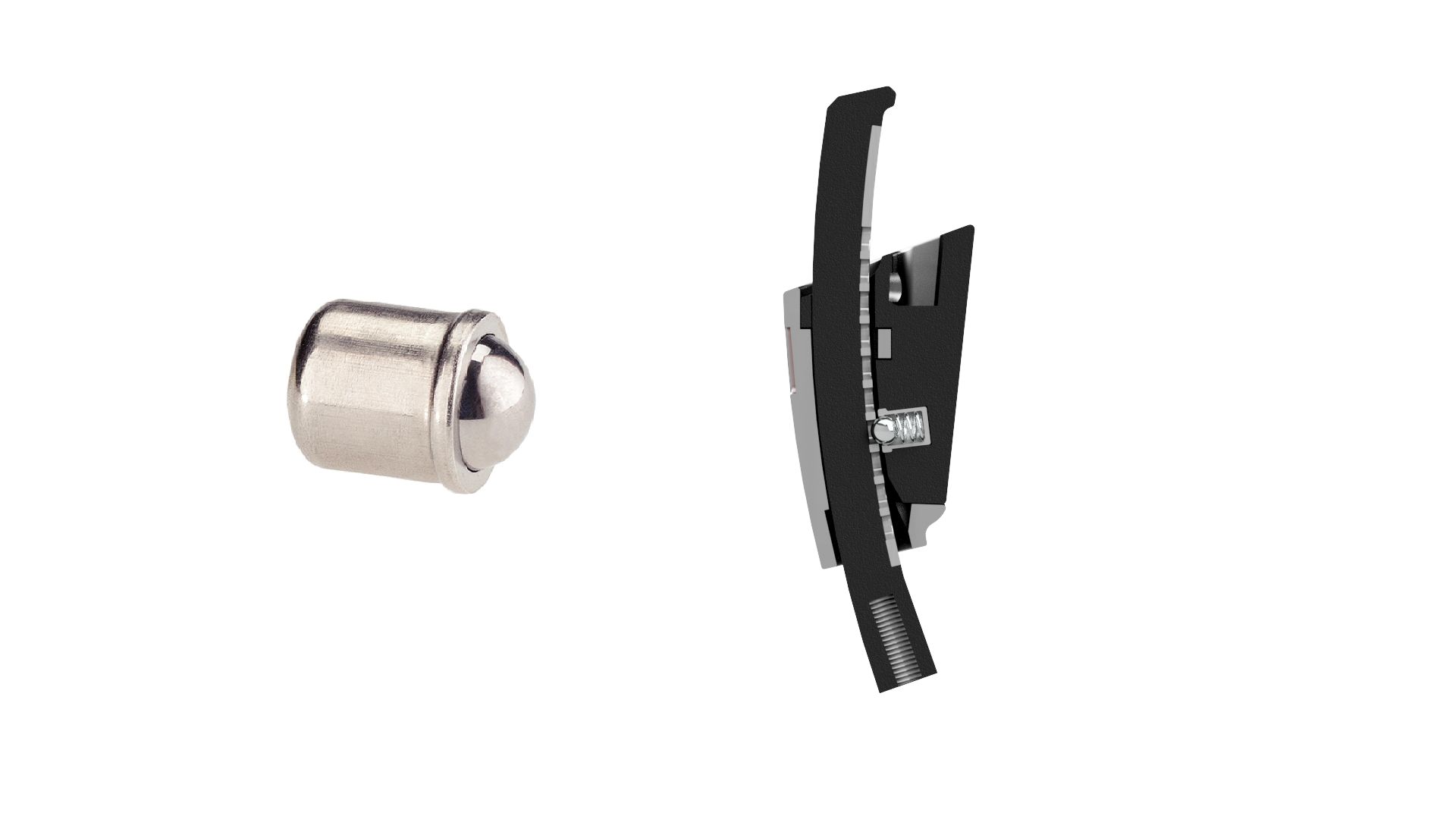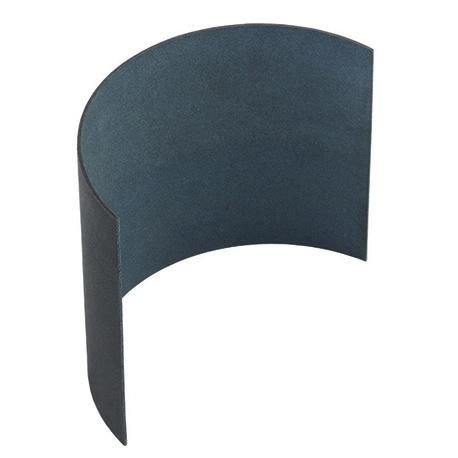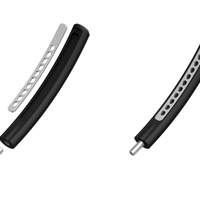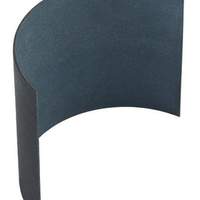While the majority of the headphone component designs are finalized, I’m always looking for ways to improve details that may seem insignificant on the surface, but will greatly improve the feel of the products, increase the perceived level of quality, and improve the durability. This week, I want to focus on improvements done to the headband size adjustment assembly, which apply to both the V1 and the V2 models. It’s one of the few mechanical and movable parts on these headphones, so it needs to be perfect. This will be achieved in several ways:
1. Combining materials and different manufacturing methods for single components. In this case, we’re combining laser-cut stainless steel with MJF PA12 plastic. While the prototypes of the V1 and V2 headphones had headband sliders entirely printed out of PA12 plastic, the final production versions will combine a 1 mm thick laser-cut stainless steel plate accurately bent into shape, with an attractive brushed finish, and bonded to a pre-designed cutout on the PA12 slider using industrial epoxy adhesive. I’ve already tested the adhesive by bonding these materials together and it provides an extremely strong connection.
The purpose of building sliders this way is to increase the durability of the individual adjustment holes used to secure the sliders in certain positions, to improve the solidity of the “clicks” while adjusting the size, and to give the sliders a vastly improved appearance with a beautiful brushed stainless steel detail. The steel plates will additionally improve the strength of the sliders as well, while allowing the majority of the slider bodies to be made out of PA12 plastic, which has great vibration damping properties This will reduce transfer of vibrations from one ear cup to the headband assembly and then to ear cup on the other side. This way, the left and right ear cup assemblies will be better isolated from each other. The cost of these steel plates is insignificant in comparison to the benefits they will bring.
2. Halder stainless steel ball plungers have been sourced and the headband component designs have been adjusted to fit them. While most headphones use flimsy plastic detents molded into components to hold the sliding mechanisms in place, LTA headphones will use the highest quality, German-made, stainless steel ball plungers, the ultimate solution for this application. This gives the adjustment steps a very solid and satisfying “click” each time users adjust the size of the headband, especially when combined with the above mentioned stainless steel plates and holes. In addition, because both contact surfaces are made out of stainless steel, they won’t wear out over time and the tactile quality of the adjustment will never degrade.
3. GGB Multifil PTFE sliding bearing tapes have been sourced and will be used on the headband front and rear parts, covering all surfaces inside the slider sockets in contact with the moving sliders. This will ensure not only the lowest coefficient of friction between the solid components, resulting in very smooth headband size adjustment operation, but will also additionally dampen the transfer of vibration between them, as the Multifil tapes have great vibration isolating properties.
4. Ultra-high tensile strength (14.9) hardened steel grub screws will be directly screwed to a depth of 10 mm and additionally permanently bonded to the sliders using industrial adhesive. With a tensile strength of 1400N/mm², the 14.9 strength class is the highest available fastener strength at the small sizes we’re working with. It’s even certified for aerospace applications. In our case, calculating the section area of an M3 screw using the π r2 formula, reduced by ~25% to account for the threads, we end up with a stress area of ~5.3 mm². Multiplied by 1400, this results in ~7400N of tensile resistance, meaning the screw can withstand the weight of ~75kg, approximately 200 times more than it will ever deal with during regular use. Over-engineered? Nope. Just the way it should be. I’m choosing to go with the absolute best option regardless of cost, providing the most secure possible rotational hinge between the sliders and the yokes. We’ll cover more about these hinges in next week’s update.



